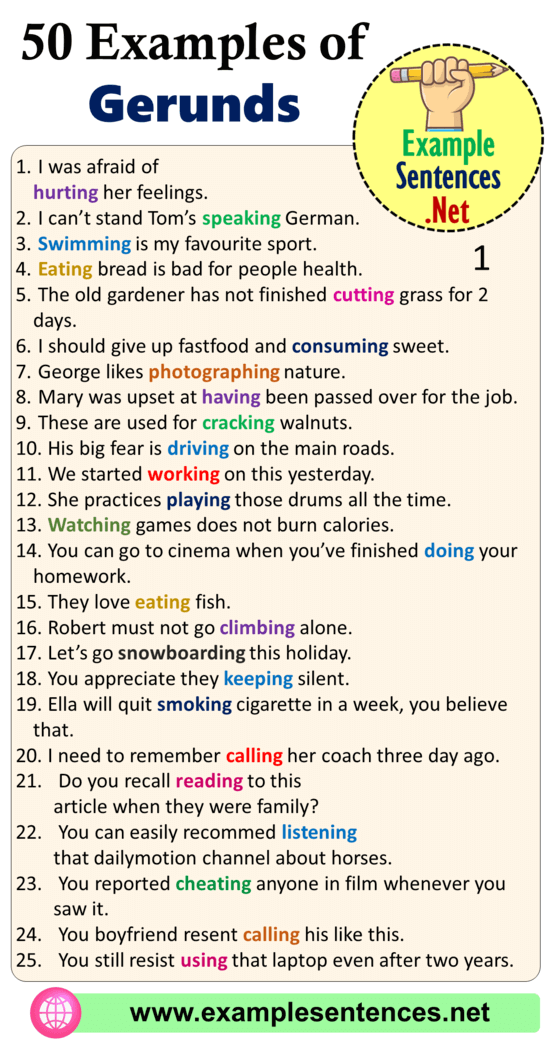Gerunds are verbs that act as nouns and end in -ing. They can be used in a variety of ways in sentences, including as the subject, object, or complement. Understanding how to use gerunds correctly can help improve your writing skills. Here are some examples of gerund sentences to help you grasp their usage.
Gerunds can be used as the subject of a sentence. For example, “Swimming is my favorite hobby” or “Dancing brings me joy.” In these sentences, “swimming” and “dancing” are gerunds that function as the subjects of the sentences. They represent the actions being performed.
Examples of Gerund Sentences
Gerunds can also be used as the object of a sentence. For instance, “I enjoy reading books” or “She loves playing the piano.” In these sentences, “reading” and “playing” are gerunds that serve as the objects of the verbs “enjoy” and “loves.” They represent the activities being enjoyed or loved.
Additionally, gerunds can function as the complement of a sentence. For example, “His favorite pastime is fishing” or “Her hobby is painting.” In these sentences, “fishing” and “painting” are gerunds that act as the complements of the verbs “is” and “is.” They describe the activities that the subjects enjoy.
Gerunds can also be used in phrases, such as “I am interested in learning new languages” or “She is tired of listening to the same music.” In these examples, “learning new languages” and “listening to the same music” are gerund phrases that provide additional information about the subjects’ interests or feelings.
In conclusion, gerunds are versatile parts of speech that can add depth and variety to your writing. By using gerunds correctly in your sentences, you can convey actions, interests, and emotions effectively. Practice incorporating gerunds into your writing to improve your language skills and enhance the clarity and impact of your communication.
